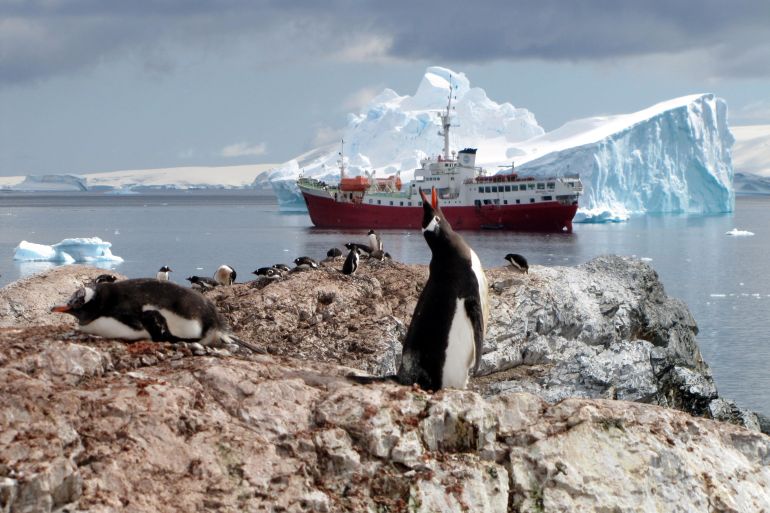
Helpless emperor penguin chicks perished at multiple breeding grounds in West Antarctica late last year, drowning or freezing to death when sea ice eroded by global warming gave way under their tiny feet, scientists have said.
Of five sites monitored in the Bellingshausen Sea region, all but one experienced a 100 percent loss of chicks, researchers reported in Communications Earth & Environment.
“This is the first major breeding failure of emperor penguins across several colonies due to sea ice loss, and is probably a sign of things to come,” lead author Peter Fretwell, a researcher at the British Antarctic Survey, told the AFP news agency.
Last year’s southern hemisphere spring – from mid-September to mid-December – saw record-low sea ice in the Southern Ocean, especially along the west coast of the Antarctic Peninsula, a prime breeding ground for the world’s largest penguin species.
The precocious breakup of ice that forms over open water adjacent to land proved fatal for thousands of hatchlings not yet mature enough to cope with frigid ocean waters.
A baby emperor penguin emerges from an egg kept warm in winter by a male, while the female in a breeding pair embarks on a two-month fishing expedition. Upon returning to the colony, she feeds hatchlings by regurgitating.
To survive on their own, chicks must develop waterproof feathers, a process known as fledging that typically starts in mid-December and lasts a couple of weeks.
But the ice in Bellingshausen Sea colonies started to give way last year in late November.
“The ice will break up, disintegrating or breaking into floes which float away,” Fretwell explained.
“Chicks that go into the water will likely drown, but even if they manage to get back out they will probably freeze to death,” he added.
“If they manage to stay on icebergs, we assume most of them will drift away and starve as the parents will not be able to find them,” Fretwell said.